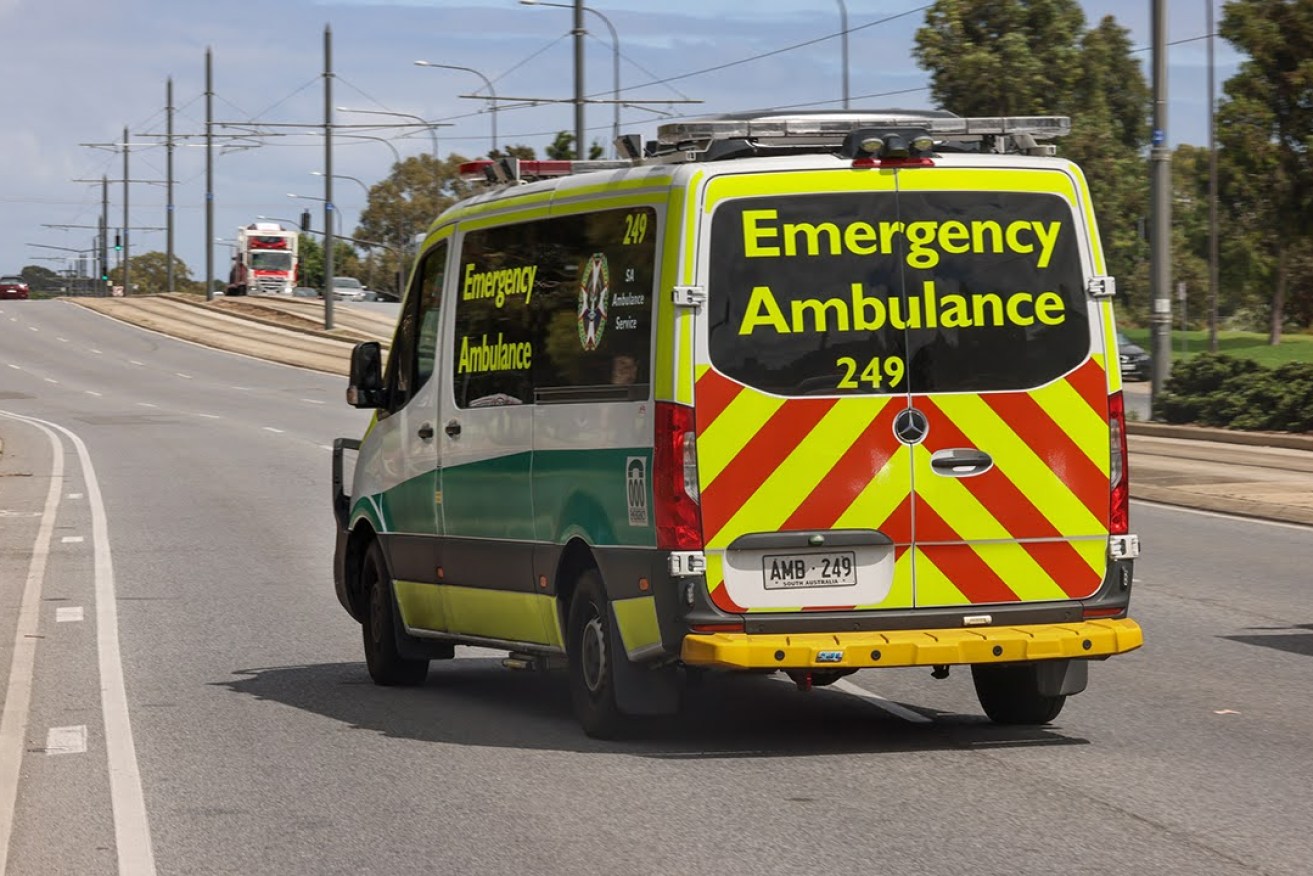‘No evidence’ of doctor’s ambulance ramping claims, review finds
A state government-commissioned review has found there is “no evidence” to back up claims that health bureaucrats are prioritising treatment for ambulance arrivals over sicker patients in hospital waiting rooms.


File photo: Tony Lewis/InDaily
The review, handed down by Dr Bill Griggs and Dr Keith McNeil today, instead found there is a “trend” for waiting room patients to be seen before ambulance arrivals – but said the reason for this can’t be ascertained at this time.
The state government commissioned Griggs and McNeil on December 7 to look into claims made by Dr David Pope that emergency department clinicians were being “intimidated to off load ambulance (patients) when there are sicker and more urgent pts in the waiting room”.
Pope, an emergency medicine specialist at the Lyell McEwin Hospital and president of the doctors’ union, claimed the situation had led to two patient deaths in waiting rooms.
But the review released today rejected those claims, finding: “No evidence was found to support Dr Pope’s contentions that patients had died (nor could we find any evidence of overt harm occurring to any patient) as a result of any instructions given by hospital administrators to offload ambulance patients as a priority over waiting room patients of known greater (or even of similar) clinical need.”
“Furthermore… there is no evidence that patients conveyed to hospital by ambulance are given treatment priority over those in the ED waiting room.”
The review also did not find evidence of counterclaims made by the paramedics’ union that waiting room patients are being prioritised over ambulance arrivals.
The Ambulance Employees Association last week highlighted the case of 54-year-old Hectorville man Eddie – who waited more than 10 hours for an ambulance – as evidence of their claims.
The Griggs and McNeil review found: “The case of a patient death cited by the AEA could not be definitively linked to the clinically inappropriate prioritisation of waiting room patients over ambulance patients.”
“Although over the past 12 months, data… shows that there is a trend for non-ambulance arrivals at EDs to been seen more quickly that those conveyed by ambulance.”
Griggs and McNeil’s review assessed emergency department data from South Australia’s major hospitals and interviewed dozens of clinicians working in emergency departments. It also consulted with the doctors’ and paramedics’ unions.
The review acknowledged a “genuine level of stress and concern” being expressed by clinicians in the hospital and ambulance service.
The state government has accepted all five recommendations from the review, including strengthening the SA Health’s ambulance transport policy to “explicitly state that the prioritisation of the care of any patient is a clinical responsibility, and that the senior clinical decision maker on shift has the responsibility and accountability for such decisions”.
The reviewers also recommended a review of SA Health’s organisation-wide approaches to “safety culture” with a view to “decreasing risk inherent in a traditionally hierarchical system”.
McNeil also told reporters today that it would take a further three months to determine why the data suggests waiting room patients are being seen earlier than ambulance arrivals.
“There is a trend for non-ambulance arrivals at EDs to been seen more quickly than those conveyed by ambulance,” the review found.
“It would however be wholly inappropriate and incorrect at this time, to draw the definitive conclusion from this data, that such a trend is the result of a systematic/deliberate bias towards non-ambulance arrivals.
“There are many reasons why such a trend may be occurring, and a much more in-depth and granular analysis is required to reach a definitive conclusion as to what is occurring here, and why.”
Premier Peter Malinauskas said the state government welcomed the recommendations, saying they were “positive”.
“We will implement not just the findings but also the recommendations that they have made – we think they are positive,”
“Needless to say, we… also read the report with a degree of relief that notwithstanding the substantial amount of pressure that exists within the system, that there are protocols in place to make sure that as best as possible people are seen given the pressures the system is generally speaking under,” the Premier said.
Pope said he stood by his claims made in December, arguing there were flaws in the report’s terms of reference and evidence gathering.
But he also welcomed the report’s recommendations, saying they would lead to positive change in the health system.
The Ambulance Employees Association also welcomed the report’s recommendations, saying they would ensure decision-making in the health system occurs “holistically and is informed by consideration of the clinical risk facing all community members accessing clinical care in our state”.
Both the paramedics and the doctors union will be part of a clinical working group to oversee implementation of the report’s recommendations.




